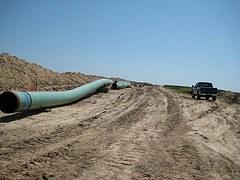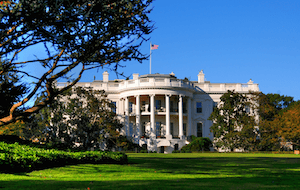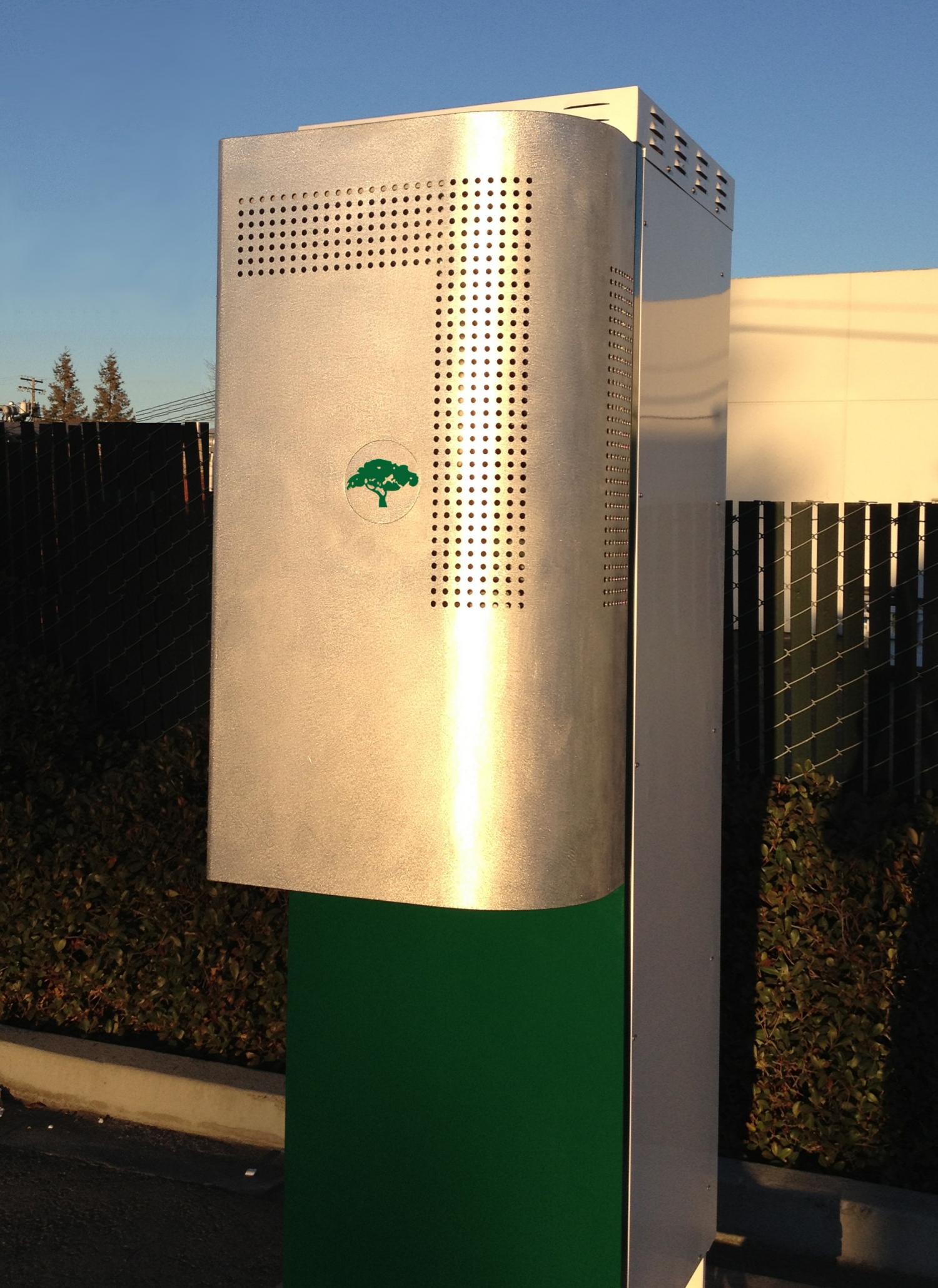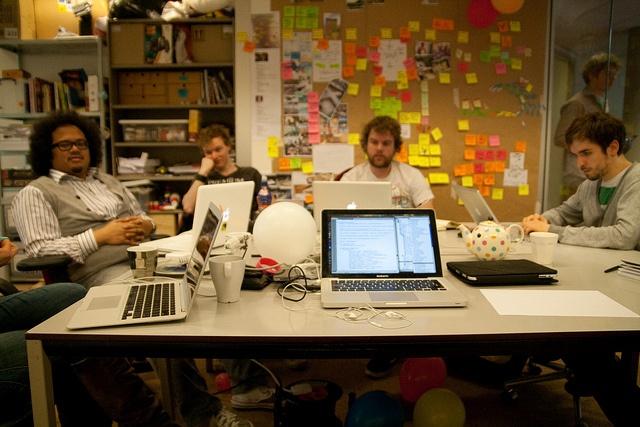Private Oversight of Keystone XL: For Scrutiny or For Budget?


If the Keystone XL pipeline goes ahead, TransCanada will have to step up its safety measures. That’s the word from the U.S. Pipeline and Hazardous Materials Safety Administration (PHMSA), which instituted two new regulations to address issues like bad welds and defective pipeline coating that were found in Keystone's southern leg.
Keystone XL inspections: Faulty welds
Inspections by PHMSA revealed that there had been an inordinate number of welds that required repairs. This was revealed in two warning letters issued last year, which highlighted the need to increase safety measures. One of the letters, issued last September, noted a 72 percent repair rate for welds conducted over a one-week period. During another week, 205 of 425 welds had to be redone.
According to the letter, PHMSA alleges that TransCanada is hiring welders who don’t have the specialized experience for this work, and are consequently using the wrong welding techniques. Welders are apparently required to pass a test demonstrating their familiarity with pipeline construction work.
A November 2013 report also highlighted an exceptional number of times in which construction workers were required to dig up and repair defects in the pipes themselves. According to PHMSA records, workers were required to remove and repair piping 125 times that was at risk of bending or sagging, causing increased risk for spills.
New requirements, new costs for Keystone XL
So in January, PHMSA quietly added two new requirements to the appendices of the State Department’s Environmental Impact Statement (EIS). These requirements will cost TransCanada substantially more money, but they also presumably raise the bar in terms of expectations for any go-ahead of the northern portion of the Keystone XL pipeline.
Per the EIS, TransCanada would be required to hire a third-party contractor to oversee construction and report on any construction issues or oversights. And no, TransCanada doesn’t get to approve the choice of the contractor. PHMSA does.
The federal government would also require the company to design and enforce a quality management program to ensure that the pipeline is “built to the highest standards by both Keystone personnel and its many contractors.”
The new requirements raise the list of “special conditions” to 59 stipulations that TransCanada must agree to and enforce for the project to go ahead. Given the significant financial benefits from this project, it’s doubtful that new conditions numbered 58 and 59 will quash the project.
Private contractors and PHMSA cutbacks
But they do give PHMSA a bit more late-night peace of mind about potential spills. And judging by the department’s recent news about staffing changes, that will be well-timed. Apparently PHMSA expects to cut its staff by as much as 9 percent in mid-June. Last year’s offer to employees of a buyout deal received 13 takers, and as of this month, the number has risen to about 40.
PHMSA hasn’t said how this jibes with the increased number of pipeline spills that it’s had to deal with this year, but maybe the new privately paid contractors that TransCanada would be expected to pay for will catch on as a way to decrease costs for a beleaguered federal department that knows a lot more oversight is needed at pipeline construction sites.
Decision indefinitely on hold
Meanwhile, the Obama administration has indefinitely delayed the decision of whether it will approve the construction. It's likely that no decision would be made until after the November 2014 elections. That's of little surprise, given the controversy Keystone has kicked up, but it's particularly understandable in light of an April 2013 letter from the Environmental Protection Agency to the Department of State noting the impact Keystone could cause. According to the letter signed by Assistant Administrator for Enforcement and Compliance Assurance Cynthia Giles, Keystone could add as much as 18.7 more metric tons of CO2-e (carbon dioxide equivalent) to the atmosphere than conventional crude oil.Ouch! Talk about a hot potato.
Image credit: Keystone pipeline, 2009, Shannon Ramos
Congress Sends $12.3 Billion Water Infrastructure Bill to Obama’s Desk


The future of our oceans, rivers, coastlines and other waterways is looking much brighter, thanks to the passing of a $12.3 billion water infrastructure projects bill by the Senate and U.S. House of Representatives.
The Water Resources Reform and Development Act (WRRDA) addresses management of U.S. waterways and coasts and includes billions of dollars in high-impact projects. Assuming President Barack Obama signs the bill into law, it will be the first federal water infrastructure authorization since 2007.
The bill is the product of several months of Senate-House negotiations, as the two chambers worked to resolve disagreements over which projects should receive congressional funding. When negotiations first commenced, the House had passed a partisan amendment offered by Congressman Bill Flores (R-TX) that would block the Army Corps of Engineers from implementing the National Ocean Policy, which promotes smart ocean planning and ocean protection. Conversely, the Senate included a provision offered by Senator Sheldon Whitehouse (D-RI), which would establish a National Endowment for the Oceans (NEO) to support conservation and restoration of ocean resources.
In the final WRDA bill, the Flores provision was axed while the Whitehouse provision passed. The Flores provision would have made it much more difficult to protect important habitat and ocean wildlife; build climate resilience; address changing ocean conditions like ocean acidification; encourage sustainable use; and provide greater certainty for businesses and other ocean users. Luckily, the provision failed and Congress preserved a policy that promotes smart ocean planning and science-based management of our resources.
The Whitehouse provision authorizes the Corps, in coordination with states, nonprofit organizations and other stakeholders, to undertake studies to determine the feasibility of projects to enhance ocean and coastal ecosystem resilience. The studies will help the Corps identify specific projects, such as restoring wetlands that offer protection from storms, making beaches more resilient to erosion and helping ecosystems adapt to sea level rise.
The measure passed despite strong opposition from the influential conservative group Heritage Action, which urged lawmakers to vote against it. Heritage Action said the bill "hikes spending while doing little to reduce bureaucracy and limit the role of the federal government." However, the bill was passed 412-4 by the House, and 91-7 in the Senate. For a branch of government that can barely pass a budget, this is a rare example of bona fide bipartisanship.
"This legislation is a reminder--an unfortunately stark reminder—that given a chance to work together in a bipartisan fashion, we can produce results for the American people," said Rep. Nick Rahall (D-W.Va.).
Image Credit: Serge Melki
Based in San Francisco, Mike Hower is a writer, thinker and strategic communicator that revels in driving the conversation at the intersection of sustainability, social entrepreneurship, tech, politics and law. He has cultivated diverse experience working for the United States Congress in Washington, D.C., helping Silicon Valley startups with strategic communications and teaching in South America. Connect with him on LinkedIn or follow him on Twitter (@mikehower)
Turning Garbage Into Jet Fuel: Sustainable Solution or Incineration in Disguise?


Can garbage power your plane ride from New York to London? That’s the idea behind a new production plant that will transform waste from London’s homes and businesses into a jet fuel that costs about the same price as conventional petroleum-based fuel but burns cleaner and produces fewer carbon emissions.
Solena Fuels, a company that produces aviation and marine fuels made from solid waste, expects to break ground on its new GreenSky jet fuel facility next year on the site of a former oil refinery outside of London. British Airways has made a $550 million commitment to purchase all the fuel produced by the plant in the 11-year period after it opens in 2017–equating to about 50 tons of fuel per year.
The city of London generates approximately 18 million tons of trash per year, according to Fast Company, and once the jet fuel facility is open for business, will send about a half a million tons of garbage originally destined for the landfill to GreenSky. Solena will turn this trash into 120,000 tons of jet fuel, first using its patented high-temperature plasma gasification technology to convert the waste into a synthetic gas; then the company will utilize various third-party technologies to transform the gas into a liquid fuel. The resulting synthetic fuel works like those produced from coal and natural gas that airlines already use and, unlike biofuels such as ethanol, can be used thousands of feet up in the air, Fast Company reported. Solena’s product is considered a “drop-in” fuel, meaning airlines can use it without modifying their plane engines or fueling infrastructure.
Solena says its fuel produced from garbage burns cleaner than crude-based jet fuels, with virtually no sulfur emissions, a minimal amount of particulate matter and lower nitrogen oxide emissions during plane take-off. While British Airways is starting off small with this project (it will source only about 2 percent of its total fuel from GreenSky), the airline hopes to increase the amount of trash-based jet fuel it uses over time, Fast Company reported.
Too good to be true?
Clean-burning jet fuel from trash–it almost sounds too good to be true. And it might just be, according to anti-incineration activists who say that the kind of gasification technology Solena uses is just incineration in disguise. Wherever you sit on the debate about waste-to-energy or waste-to-product facilities, we can all agree that the GreenSky facility and Solena’s jet fuel will have environmental impacts, and it’s unclear, without further study, if this project is the most sustainable solution.
The jury is still out on which waste management method emits fewer greenhouse gas emissions: a landfill releasing the potent greenhouse gas methane as garbage decomposes or a gasification facility that produces carbon emissions as it converts waste to a product. Different studies come to various conclusions–usually in favor of the opinion of the report’s funders. Either way, we can’t be sure if GreenSky’s carbon footprint would be smaller than the amount of methane produced if the garbage was sent to the local landfill.
Like other incineration-like facilities, GreenSky will most likely produce a waste byproduct called fly ash that typically contains high concentrations of toxic metals from products like batteries and paints that end up in the waste stream. Solena Fuels’ CEO Robert Do told Fast Company that recyclables like bottles, glass and cans will be sorted out of the waste stream coming to GreenSky, but even with the best efforts of residents or waste management workers, it’s nearly impossible to extract every possible contaminant in the garbage that could result in toxic residue.
Anti-incineration advocates also point out that incinerators and gasification facilities undermine local recycling programs, essentially competing for the same feedstock.
"London has a very strong recycling program, so the waste all goes into a recycling center first," Do said. "Everything that can be recycled--bottles, glass, cans--will be recycled. The material that’s left over, that would normally go to a landfill, that’s the stuff they take to our plant."
Do and Solena seem supportive of London’s recycling efforts now, but what would happen if the city ramps up its waste reduction efforts or adopts a zero waste goal?
While it’s encouraging that British Airways is thinking outside the box to reach its sustainability goals, the airline might have missed the mark on the best ways to reduce waste and cut carbon emissions.
Image credit: British Airways
Passionate about both writing and sustainability, Alexis Petru is freelance journalist based in the San Francisco Bay Area whose work has appeared on Earth911, Huffington Post and Patch.com. Prior to working as a writer, she coordinated environmental programs for Bay Area cities and counties. Connect with Alexis on Twitter at @alexispetru
Family-Owned Hotel in Santa Monica Shoots for LEED Platinum Certification


Hotels and tourism businesses worldwide have been keen to capitalize on travelers' growing “eco-consciousness.” Besides the potential boost in revenue from “green” marketing, ecologically sensitive and energy efficient design, building and operations can yield substantial savings; it can also reduce the vulnerability and risk exposure of hotel and tourism businesses to fluctuations in the prices of energy, water and environmental degradation.
Aiming to earn Platinum-level LEED certification from the U.S. Green Building Council, the family-run Shore Hotel in Santa Monica, Calif. is installing cutting-edge energy storage and power management technology developed by Green Charge Networks.
Explaining the rationale that led to the decision, CEO Steve Farzam stated: “Shore Hotel is committed to modeling how sustainability and luxury can work together to create an incredible experience for our guests. Energy storage is a natural complement to the many measures we’ve taken to reduce our carbon footprint and achieve Gold LEED certifications.”
California's high demand charges
The demand charges California's electric utilities charge commercial and industrial customers for electricity usage during peak periods are among the highest in the nation, and on average make up 50 percent or more of businesses' electric bills. Combining historical energy usage patterns with real-time weather data, installing Green Charge's GreenStation platform could cut the Shore Hotel's demand charges by as much as 50 percent.
In contrast to standard rates for electricity usage, which are measured in kilowatt-hours (kWh), demand charges are assessed according to power usage during peak-demand periods and measured in kilowatts (kW). While the former has been trending lower for California businesses over the past decade, the latter has been trending higher--rising over 7 percent annually, Green Charge explains in a press release.
As Victor Shao, CEO of Santa Clara, Calif.-based Green Charge, elaborated in a company press release:
“Many of our customers have seen significant reductions in demand charges, some by 50 percent or more. We’re excited to work with the Shore Hotel to model how energy storage can play an integral role in improving the efficiency of green buildings. This partnership further demonstrates the Shore Hotel’s commitment to sustainable building practices and power efficiency.”
Green building, EVs, and intelligent energy storage and power management
In addition to installing GreenStation, the Shore Hotel is installing an electric vehicle (EV) charging station, a decision management is taking based on the growing number of EVs guests are driving. Shore's GreenStation will help there as well, reducing demand charges from spikes in electricity usage resulting from EV charging.
The combination of ongoing cost reductions and performance enhancements in commercial and industrial-scale battery storage, smart grid and solar photovoltaic (PV) systems, along with the high and more volatile costs of fossil fuel energy, is leading a growing number of businesses to make investments in energy efficiency and intelligent energy storage-power management systems.
Adding significantly to the impetus is a recently enacted California state mandate requiring that investor-owned utilities acquire 1,325 megawatts (MW) of electricity and thermal storage capacity by 2020.
In addition, California's Self-Generation Incentive Program (SGIP) “pays $2 per watt for an energy storage solution. That's typically half the cost [of installing a GreenStation platform], which has really helped the state of affairs in California,” Shao told 3p in a recent interview.
Besides Shore Hotel, Green Charge counts 7-Eleven, Avis and Walgreens as customers. All told, the company has closed more than 2 MWs' worth of Power Efficiency Agreements.
Images courtesy of Shore Hotel and Green Charge Networks
Interview: Sara Greenstein, President of UL’s Supply Chain & Sustainability Team


TriplePundit reported live from the Fortune Brainstorm Green 2014 conference in Laguna Niguel, CA. Follow along on this page for ongoing video interviews with sustainability thought leaders, corporate change agents and entrepreneurs who are leading the way to a more sustainable future.
Sara Greenstein is President of UL's Supply Chain & Sustainability Team, a responsibility which covers a great deal of complexity. I had a chance to talk briefly with Sara at Fortune Brainstorm Green last week, and she covered the basics on what it means to build a more sustainable supply chain as well as insight into UL Environment's work with Dell to offer the computer industry's first ever closed loop recycling.
How a 'BYOD' Policy Can Save Companies Money


By Jessica Oaks
The bring your own device trend (BYOD) has gained much popularity throughout the last few years, and it’s no surprise why. The movement has many benefits, such as increased innovation and productivity, ease of collaboration, and anytime access for employees who are clocking in at all hours of the day and night. But for many companies what makes BYOD so appealing is simply the bottom line. It's a potential money saver, even with the added cost of mobile device management (MDM) to keep things running smoothly. And as expenses go, that doesn't have to be a particularly big one.
BlackBerry's BES10, for instance, is one of the most affordable MDM solutions out there. Allowing employees to work on their own devices is now feasible–even for smaller companies–from a security and administration standpoint. This accessibility may be why research and advisory firm Gartner has predicted that at least half of white collar employees in the United States will be using their own devices for work by 2017.
As for how BYOD can save a company money, it's about more than just the devices IT no longer has to buy (or the ones they do buy that end up wasted). There are several ways BYOD is already making doing business less expensive.
Employees handle their own upgrades
Outfitting employees with the latest tech takes time–days or even weeks can go by without projects being touched while IT installs and then tweaks it all. BYOD streamlines the process, saving on IT costs whether there's a company-wide shift or new members of a team coming on board. And don't ask whether workers will upgrade; ask when. The answer is roughly every 22 months for cell phones and often more frequently for devices like tablets, so a regular influx of new gear is almost guaranteed with no price tag attached.
Less waste means fewer unnecessary expenses
With employees handling things on the device side, there's almost no chance a company will invest in tech that never gets used. Cloud-based server expenses are much easier to customize because plans can be changed on the fly based on evolving needs. While ongoing subscription costs do replace the cost of devices and software licenses, they tend to be lower in the long-term.
Greater comfort = Fewer training costs
Training costs go way down when employees are utilizing technologies with which they are already comfortable. In some cases companies may be able to get at least a handful of workers up and running with no training at all so projects aren't delayed by training time. A related side benefit is that when a coworker evangelizes about a piece of tech or an app, other employees will almost always be more comfortable adopting it.
Better employee retention
More give when it comes to telecommuting and flex time (thanks to BYOD) is bound to result in happier employees and consequently fewer expenses related to HR. It turns out, though, that BYOD without those particular benefits still results in happier staff. Global consulting firm Deloitte found that workers at companies with established BYOD policies were more satisfied than any other employees.
Although half of U.S. companies are expected to implement a BYOD policy by 2017, there’s no need to wait until then. Companies can roll out the policy now and start saving green immediately.
Image credit: Flickr/PresseBox.de
Jessica Oaks is a freelance journalist who loves to cover technology news and the ways that technology makes life easier. She also blogs at FreshlyTechy.com. Check her out on Twitter @TechyJessy.
Brazilians pay high price for World Cup sponsor tax breaks


FIFA must end its ‘obscene’ insistence on World Cup host countries giving tax breaks worth hundreds of millions to the event’s corporate sponsors, a new campaign is urging.
Brazil will lose up to £312m in foregone revenue to World Cup sponsors including McDonalds, Budweiser and Johnson & Johnson, according to the campaign by InspirAction, Christian Aid’s Spanish organisation.
"The price of these tax breaks for corporate giants will be paid by people living in poverty in Brazil and that is obscene," said Isabel Ortigosa of InspirAction.
"Brazil is already one of the most unequal countries in the world. The millions that FIFA demands for its sponsors should be used for the benefit of Brazil’s many poor communities, not to enrich the already powerful."
InspirAction has launched a petition calling on FIFA President Sep Blatter to ‘give tax breaks for the World Cup sponsors the red card - and never impose these rules on World Cup host countries in the future.’
Ortigosa added: "This is money that should be used to help Brazil’s millions of poor families, for instance with better schools, hospitals and public transport, financial support for all communities affected by infrastructure projects and also through a fairer tax system."
Inequality in Brazil is so severe that the top 20 per cent of people get almost 60 per cent of all income, while the bottom 20 per cent (around 40 million people) get just 3 per cent, according to World Bank figures.
Picture credit: © Dan Bar | Dreamstime.com
Top choc companies seal sweet deal


The world’s largest chocolate companies have signed a joint agreement to improve sustainability in key cocoa-producing countries, starting with Ivory Coast and Ghana.
The companies, which include Nestlé, Hershey, Mars and Mondelez, have pledged to work with the Ivory Coast and Ghanaian governments to train farmers and promote community development.
The scheme, known as CocoaAction, is expected to improve the lives and productivity of 200,000 farmers in Ivory Coast and 100,000 farmers in Ghana, the two countries responsible for around 55% of the world's cocoa supply.
The agreement is part of the work of the World Cocoa Foundation (WCF), and there are plans to roll it out to other producer countries.
Barry Parkin, WCF chairman and chief sustainability officer at Mars, commented: "This agreement represents one of the most significant steps the sector is taking to make cocoa sustainable. This alignment of objectives, commitment of resources, and sharing of best practices is the type of transformative initiative that will really help farmers become more productive and secure the future of cocoa.”
Other companies that have signed up include Barry Callebaut, Ferrero and Olam International.
Picture credit: © Leung Cho Pan | Dreamstime.com
Korean financial firms shamed for poor service


South Korea’s financial watchdog, The Financial Supervisory Service (FSS), has ordered 17 financial firms and their 3,000 branches to post an embarrassing “red notice” at their entrances to alert customers to their low customer service ratings.
The FSS said that the firms that received poor evaluations for settling customers’ complaints have to display notices printed in large red letters saying: “Fifth Rate (Poor Service),” The notices must also go on their websites.
The ratings, ranging from “first” to “fifth,” are based on the number of complaints compared to the size of the firms and their efforts to improve services.
Those with the lowest ratings are protesting, saying that it is too harsh. However, the FSS said that they did not follow instructions to post their ratings on their homepages, and thus it is forcing them to notify their customers.
The FSS announced the customer service ratings in April after reviewing 85 firms, including banks, credit card companies and securities companies, nationwide.
The institutions with the lowest ratings are to post them at the entrances to all their branches for three months.
The institutions with the largest number of branches nationwide are complaining that the notice makes them look like they have a credit problem.
In addition, they also pointed out that the FSS did not notify them before implementation. “If the new measure is to be introduced, the authorities should have informed us beforehand. But without prior warning, the extreme measure is too harsh and does nothing but kill us if we don’t meet standards,” an official from a financial firm said.
They are also raising questions about the fairness of the evaluation standards, saying basing the rating on the number of complaints to the total assets is unfavourable to small firms.
In addition, comparing provincial banks to commercial banks is also unfair, they said.
“We’ve applied a ‘name and shame’ principle to them because some firms have not shown any improvement in settling their complaints for years,” an FSS official said.
Some firms are making efforts to reduce their customer complaints, such as conducting workshops for employees on how to improve customer service, a topic widely neglected in Korea.
“We need to improve customer service to reduce the number of the customer complaints, but it is desirable to oversee them with more rational measures rather than this extreme one,” an official from a credit card firm said.
Picture credit: © Pressureua | Dreamstime.com
Dam construction goes ahead in Laos despite eco warnings


The building of a second hydroelectric dam on the Mekong river, which conservationists claim will have devastating effects, is about to start in Laos.
The fear is that the 260-megawatt Don Sahong dam will threaten many of the 1,200-plus fish species in the Mekong and take away the livelihoods of villagers dependent on fishing and related activities.
Ecologists particularly are worried that the project will kill off the rare Irrawaddy dolphins remaining in the Mekong. Only 85 are thought to be in existence. WWF warns that the greatest risks to the dolphins are the sound waves from explosives used in excavating millions of tons of rock, the increased boat traffic, water pollution and habitat degradation.
The developer appointed by the Laos government, Mega First Corporation Berhad, a Malaysian company, replies that the dam will have “no significant impact” on the environment and will create new channels for fish migration.
Last October Laos told the Mekong River Commission, an agency promoting the sustainable management of the waterway, that it intended to start construction.
Neighbouring Cambodia, Thailand and Vietnam maintained the project should be subject to consultation with commission members and that a consensus should be reached.
Laos argued that the dam fell outside those provisions as it would be on one of the many channels created by the Khone Phapheng waterfall, a popular beauty spot, not in the Mekong mainstream.
The commission referred the issue to its council, its highest level, consisting of member states’ water and environment ministers, which still has to give a ruling.
However, the commission is clearly little more than a talking shop as an earlier plan, for the Xayaburi dam further up-river in northern Laos, is now proceeding, even though the council could not reach a consensus.
Objections to Xayaburi were that it would displace at least 2,100 villagers, remove agricultural land and destroy fishermen’s livelihoods. Today people are already being told to prepare to move.
More discontent could be looming. Last year Laos said it was planning ten more hydropower dams on the Mekong. Now it is talking of another 60.
Most of the electricity will be sold to Thailand and Cambodia to boost the economy of Laos, one of the world’s poorest countries.
Nam Viyaketh, the industry and commerce minister, wants to turn his nation into the “battery of south-east Asia”. When the dams were being considered in 2010 he predicted: “Laos can be rich.”